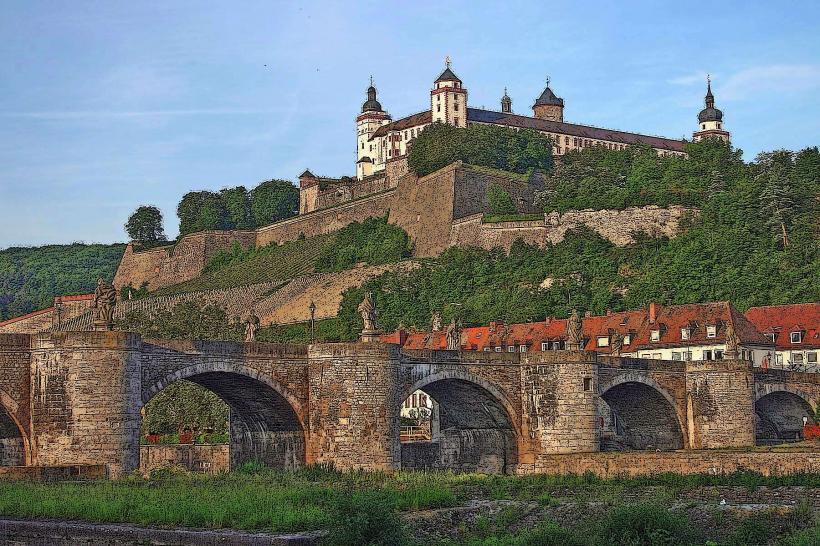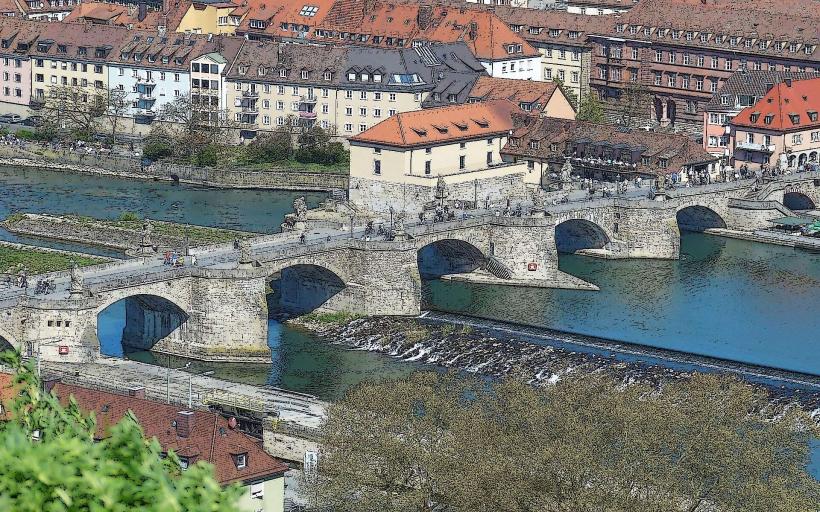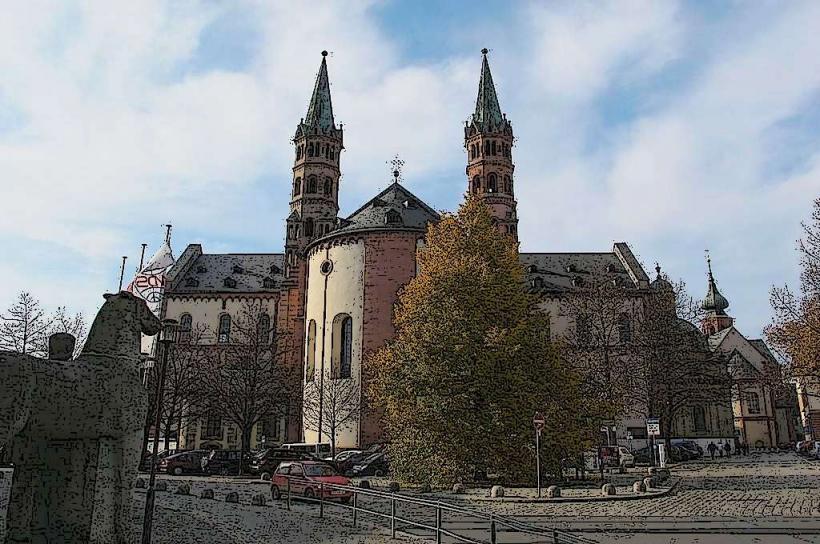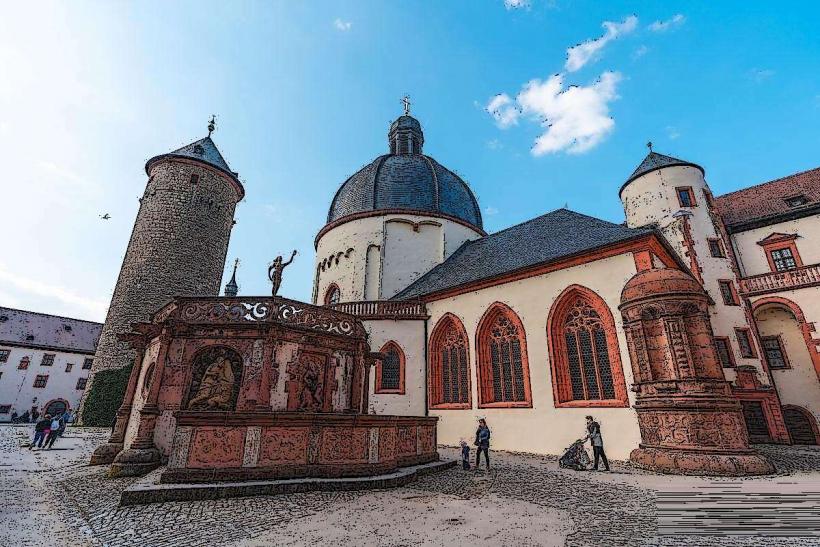Information
Landmark: Wurzburg ResidenceCity: Wurzburg
Country: Germany
Continent: Europe
The Würzburg Residence (Würzburger Residenz) is one of the most significant Baroque palaces in Germany and a UNESCO World Heritage Site. Located in the city of Würzburg, in the Franconia region of Bavaria, it is renowned for its grand architecture, opulent interiors, and stunning gardens. The residence served as the primary residence of the Prince-Bishops of Würzburg from the 18th century and remains a prime example of Baroque architecture and design.
Key Facts and Features of the Würzburg Residence
Historical Background
- The Würzburg Residence was commissioned by Balthasar Neumann, one of the leading architects of the Baroque era, under the direction of Prince-Bishop Johann Philipp Franz von Schönborn. Construction began in 1720 and was completed in 1744.
- The residence was intended to be both a magnificent palace and a symbol of the power and prestige of the Prince-Bishops of Würzburg, who were the secular rulers of the region.
- The residence was designed to reflect the grandeur of the Baroque era, showcasing the wealth and influence of the Prince-Bishops.
Architectural Design
- The architectural style of the Würzburg Residence is quintessentially Baroque, characterized by grandeur, symmetry, and opulence. The design combines Italian Baroque influences with local traditions and is noted for its innovative use of space and light.
- The palace features a central courtyard and is arranged around a grand central staircase, which leads up to the main living areas. The residence is a multi-story building, with lavishly decorated rooms spread across multiple levels.
- The facade of the building is adorned with sculptures, columns, and intricate detailing, giving the residence a striking appearance.
The Grand Staircase
- One of the most remarkable features of the Würzburg Residence is the Grand Staircase, designed by Balthasar Neumann. The staircase is one of the most beautiful Baroque staircases in Europe.
- The stairway features a stunning ceiling fresco by Giovanni Battista Tiepolo, one of the most famous artists of the period. The fresco, known as "The Apotheosis of the Prince-Bishops of Würzburg," depicts an allegorical representation of the Prince-Bishops’ power and divine right to rule.
- The dramatic composition of the staircase and fresco creates a breathtaking sense of movement and grandeur.
Interiors and Rooms
- The interiors of the Würzburg Residence are a dazzling example of Baroque art and design, with frescoes, stained glass windows, and sumptuous furnishings throughout. Some of the most notable rooms include:
- The Imperial Hall (or Kaiserzimmer): A large hall used for official receptions and ceremonies, it is one of the most magnificent rooms in the residence, adorned with elaborate frescoes and gold-leaf accents.
- The Mirror Room: This stunning room is decorated with mirrored walls, intricate ceiling frescoes, and a magnificent chandelier. It exemplifies the opulence of Baroque design.
- The Garden Hall: Overlooking the palace gardens, this room is one of the most important ceremonial spaces in the residence.
- The Porcelain Room: This room is entirely decorated with porcelain tiles and features an exquisite collection of porcelain figures and vases.
The Gardens
- The palace gardens are an integral part of the Würzburg Residence, designed in the formal Baroque style to complement the palace’s grandeur. The gardens are extensive and feature neatly arranged flower beds, fountains, and a series of terraces.
- The garden area includes various sculptures, ponds, and ornamental features, providing a peaceful retreat from the splendor of the palace itself.
- The gardens were designed by Ludwig von Sckell, who also designed the gardens at the Schloss Nymphenburg in Munich. They are organized in a geometrical pattern, with a formal layout that reflects the grand scale of the residence.
Art and Decoration
- The palace is home to a vast collection of Baroque art. The walls are adorned with frescoes, paintings, and sculptures, many of which were commissioned specifically for the residence.
- Giovanni Battista Tiepolo, an Italian painter, contributed many of the most important frescoes, including the aforementioned fresco in the Grand Staircase, which remains one of his masterpieces. The works of Tiepolo throughout the residence are among the finest examples of Baroque ceiling painting.
- The palace also features numerous furnishings, including luxurious tapestries, marble sculptures, and a collection of antique furniture.
UNESCO World Heritage Status
- In 1981, the Würzburg Residence was designated as a UNESCO World Heritage Site due to its exceptional Baroque architecture and its significance as an example of European palace architecture.
- The residence’s historical importance, as well as its preservation and artistic treasures, make it one of Germany’s most valuable cultural landmarks.
Museum and Visitor Experience
- Today, the Würzburg Residence is open to the public as a museum. Visitors can tour the palace, viewing its stunning interiors, the magnificent art collections, and the beautiful gardens.
- The palace complex also houses exhibits that showcase the history of the residence and the Prince-Bishops who lived there. Special exhibitions often focus on different aspects of the Baroque period, art history, and architecture.
- Guided tours are available for those who want to learn more about the palace’s history, architecture, and art in greater detail.
Cultural Events
- The Würzburg Residence is not just a museum but also a venue for various cultural events. Classical music concerts, art exhibitions, and other cultural activities are regularly held within the palace, particularly in the grand rooms and gardens.
- The Würzburg Residence Concerts feature performances by renowned musicians and are a key highlight of the local cultural scene.
Conclusion
The Würzburg Residence stands as a masterpiece of Baroque architecture, art, and design. With its sumptuous interiors, grand staircase, and elegant gardens, the palace offers a glimpse into the luxurious lifestyle of the Prince-Bishops who once ruled the region. Its UNESCO World Heritage status underscores its importance as one of Germany’s most significant historical and cultural sites. For visitors, the Würzburg Residence is a must-see, offering an extraordinary opportunity to experience the grandeur of the Baroque era firsthand.





